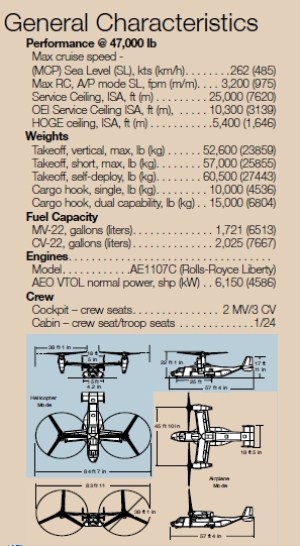Gents,
Any comparison between the tilt rotor and the helicopter with the characteristics of the helicopter being the standards is really unfair. What if the helicopter, or rotary wing design, is compared against the 'regular' aircrafts, or fixed wing design, with the fixed wing's characteristics as standards? The tilt rotor design is not new but its engineering has its own unique challenges just like how the rotary wing design has its own unique challenges. As the tilt rotor incorporate SOME of the best features of both worlds, it will also sacrifice via omission SOME other desirable features from both worlds. For example, to get long range, the V-22 must sacrifice autorotation. For the helo, to have hovering capability, it must sacrifice range and speed. Any attempt to take either design beyond its mechanical limitations will result in disaster. So to disqualify the V-22 just because it cannot autorotate while discarding its far longer range capability, something that even die hard helo pilots want, is being intellectually dishonest.
Will the tilt rotor do away the fixed wing? Who here sane agree? Did the rotary wing do away with the fixed wing like the early proponents believed? Laughable, right? So what make anyone come to the conclusion that if we have the tilt rotor we must do away with the helo? For immediate coastal waters, the helo will remain supreme for a very long time. Any fisherman in trouble? Then the tilt rotor is the answer. Since the V-22 is the bridge between the 'regular' aircrafts and the helos, we must exploit it best in situations where the other two either proved inadequate or even outright failed.
Any comparison between the tilt rotor and the helicopter with the characteristics of the helicopter being the standards is really unfair. What if the helicopter, or rotary wing design, is compared against the 'regular' aircrafts, or fixed wing design, with the fixed wing's characteristics as standards? The tilt rotor design is not new but its engineering has its own unique challenges just like how the rotary wing design has its own unique challenges. As the tilt rotor incorporate SOME of the best features of both worlds, it will also sacrifice via omission SOME other desirable features from both worlds. For example, to get long range, the V-22 must sacrifice autorotation. For the helo, to have hovering capability, it must sacrifice range and speed. Any attempt to take either design beyond its mechanical limitations will result in disaster. So to disqualify the V-22 just because it cannot autorotate while discarding its far longer range capability, something that even die hard helo pilots want, is being intellectually dishonest.
Will the tilt rotor do away the fixed wing? Who here sane agree? Did the rotary wing do away with the fixed wing like the early proponents believed? Laughable, right? So what make anyone come to the conclusion that if we have the tilt rotor we must do away with the helo? For immediate coastal waters, the helo will remain supreme for a very long time. Any fisherman in trouble? Then the tilt rotor is the answer. Since the V-22 is the bridge between the 'regular' aircrafts and the helos, we must exploit it best in situations where the other two either proved inadequate or even outright failed.





 ,well perhaps ur ego has blinded u so much that u cant even differentiate what is right & what is wrong .
,well perhaps ur ego has blinded u so much that u cant even differentiate what is right & what is wrong .


